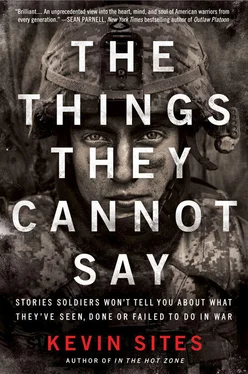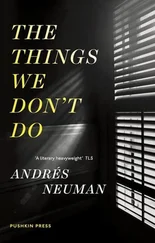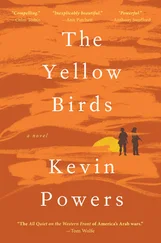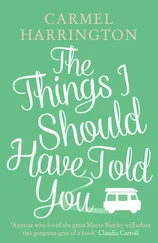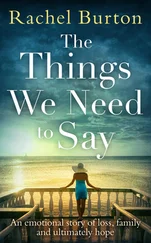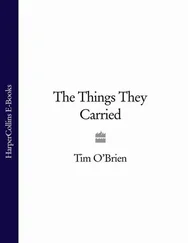Shortly after Anita and I moved in together I began preparing for a reporting trip to Afghanistan. It would be my fourth time there, and I stepped up my therapy sessions, hoping to find some closure before I went. I found myself telling Dr. Sadoff that one of the ways in which I thought I might be able to be at peace with my actions in Fallujah was if I lost a limb during the upcoming trip, preferably a leg, rather than a hand or arm. The loss of that leg, while not a life, could make me feel that I was even for Nidal; that, along with my years of self-hatred and self-destruction, would ante up for his life.
But while Dr. Sadoff couldn’t dissuade me of the notion, my actual behavior during that reporting trip to Afghanistan was the anathema of all that I had been saying. For the summer I was in Afghanistan, I trod perhaps more carefully than I ever had in my life, walking well-worn paths and being careful to stay out of clearings and the line of fire when possible. I had purchased a Kevlar helmet and body armor, which I normally never wore while working in war zones. Inside the helmet, I placed a picture of Anita, and inside the body armor, a photograph of each of the girls, one in front and one in back. Somehow, I understood there was now a value to my life that went beyond myself. If I died or lost a limb, Nidal and I might be even, but I would then be cheating the people who now considered me part of their family, the ones I wore next to my heart and on top of my head. My past actions during war didn’t make me a bad person, nor did they invalidate the good things inside me; they simply proved the existence of both. While I obviously had not always seen clearly what was the right thing to do in the past, in this case, I had no doubt. Despite all my shortcomings, all my betrayals, all the pain I caused, all my sins, I wanted to come home alive—yes, changed by the things war had both given and taken from me, but somehow complete.
Postscript
I secretly married Anita exactly two years to the day I met her at Joshua Tree, three days before leaving for my fourth trip to Afghanistan. I married her again, in front of family and friends, after my return. Inscribed on my wedding band is the Latin phrase “ Ex tenebris lux ”—“Out of darkness, light.”
Ongoing Storytelling Effort
If you have comments about this book and are a service member or veteran (from anywhere in the world) who would like to be part of an ongoing veterans’ storytelling effort, please e-mail me at the address below. Your story, photos, or video may be shared in this book’s companion website.
thingstheycannotsay@gmail.com
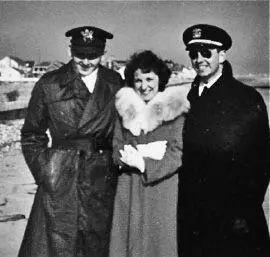
The author’s mother and father (right) during the Korean War
My deepest thanks to all the service personnel, both U.S. and international, who had the courage and generous hearts to share their most intimate stories of war. Your efforts, I strongly believe, will help you on your journey—and encourage others to find their own way home again. They include those featured in this book: Michael Ayala, Mikeal Auton, Joe Caley, Morris Goins, Zach Iscol, Thomas Saal, Sebastiaan Schoonhoven, Leonard Shelton, James Sperry, Lior Tailer and William Wold.
My thanks also to the many others who helped me to understand the combatant’s experience in war, especially past and current service members: Frederick Coe, Wil Cromie, Pat Donahue, Justin Featherstone, Bernard Finestone, Dana Golan, Phillip Herbig, Roxanne Hurley, Gord Jenkins, Jeff Milhorn, Cathy Murphy, Arthur Myers, Zakyia Ibrahim Rahman, Matthew Rodgers, John Schluep, Justin Schmidt, Jonathan Staab, Sean Tuckey, Garret Ware and Joe Young.
I talked with the mothers, wives and girlfriends of some of the combatants profiled here—and I thank them for their contributions—but out of respect for their privacy, I will not name them here.
Several experts in the field of combat-related post-traumatic stress disorder provided invaluable assistance both through their written works and in personal interviews they granted to me, and in some cases, they helped me to make contact with individuals featured in this book. I’m extremely grateful to Dr. Edward Tick, author of War and the Soul: Healing Our Nation’s Veterans from Post-Traumatic Stress Disorder , and to his assistant Paula Griffin. I’m also indebted to Dr. Jonathan Shay, author of Achilles in Vietnam: Combat Trauma and the Undoing of Character and Odysseus in America: Combat Trauma and the Trials of Homecoming . Lieutenant Colonel Dave Grossman was very helpful in providing insight into the actual combat experience both in direct interviews with me and in his seminal work On Killing: The Psychological Cost of Learning to Kill in War and Society and his follow-up work, On Combat: The Psychology and Physiology of Deadly Conflict in War and in Peace . Particularly helpful in quantifying the impact of combat on our society was the RAND Corporation’s study “Invisible Wounds of War: Psychological and Cognitive Injuries, Their Consequences, and Services to Assist Recovery,” edited by Terri Tanielian and Lisa Jaycox. And all those of us who have become students of war know the debt we owe to J. Glenn Gray and his work The Warriors: Reflections on Men in Battle for taking the subject out of the realm of myth and bringing it back to earth for honest discussion.
Other books that provided critical perspectives and thoughtful insights: War Is a Force That Gives Us Meaning and What Every Person Should Know About War , both by the brilliant Chris Hedges; War by the excessively talented Sebastian Junger; Anthony Loyd’s dually devastating and inspiring tome My War Gone By, I Miss It So ; Ryszard Kapuscinski’s classic The Soccer War ; One Soldier’s War by Arkady Babchenko, which provides a grunt’s eye view from a Russian perspective; Brian Turner’s Phantom Noise , which exemplifies the warrior-poet ideal; and the enduring standards of military strategy and tactics On War by Karl von Clausewitz, The Art of War by Niccolò Machiavelli and the work of the same name by Sun Tzu; Breaking the Silence: Soldiers’ Testimonies from Hebron and Women’s Soldiers’ Testimonies ; and finally, perhaps the most important American novel to explore the Vietnam War experience and one whose stories and title helped inspire this book, Tim O’Brien’s The Things They Carried . And I’d like to offer special thanks to author and Vietnam War veteran Karl Marlantes for his remarkable book What It Is Like to Go to War , which is one of the most enlightening works on the subject I’ve ever read and which was instrumental in helping me to both identify and better endure the burdens of my own wars.
Many thanks to Hannah Catabia for her research work in the U.S., to Stephanie Freid for her research and interview assistance in Israel and to Mohammed Jalizadi for his efforts on my behalf in northern Iraq.
I want to express my gratitude to the Nieman Foundation for the fellowship opportunity that afforded me a paid year to struggle and reflect and eventually complete this difficult, emotional and cathartic project. Specifically I’m grateful to my colleague and friend Audra Ang, who tracked down the therapist who succeeded in derailing my plans for martyrdom on the twin altars of self-absorption and self-indulgence.
I’m extremely fortunate to have a very supportive imprint in Harper Perennial; my friend and editor Amy Baker is as encouraging of my efforts as she is forgiving of my lapsed deadlines. She made this a better book. And also with the Harper Perennial team, much appreciation to editor Michael Signorelli for taking the project handoff seamlessly and getting it across the finish line, and to production editor Mary Beth Constant and copyeditor Aja Pollock, who transformed this sometimes unwieldy manuscript from a jumble of words into a readable format where verb tenses actually exist in their proper time and place.
Читать дальше
